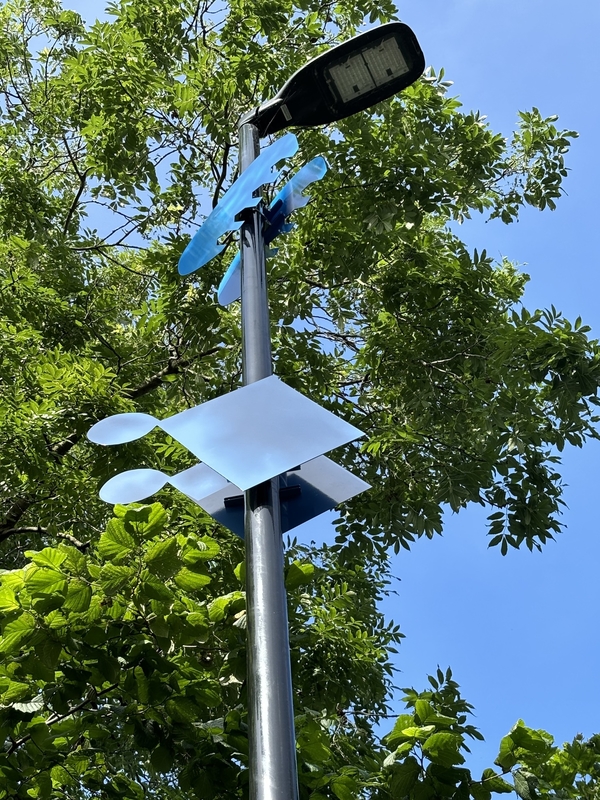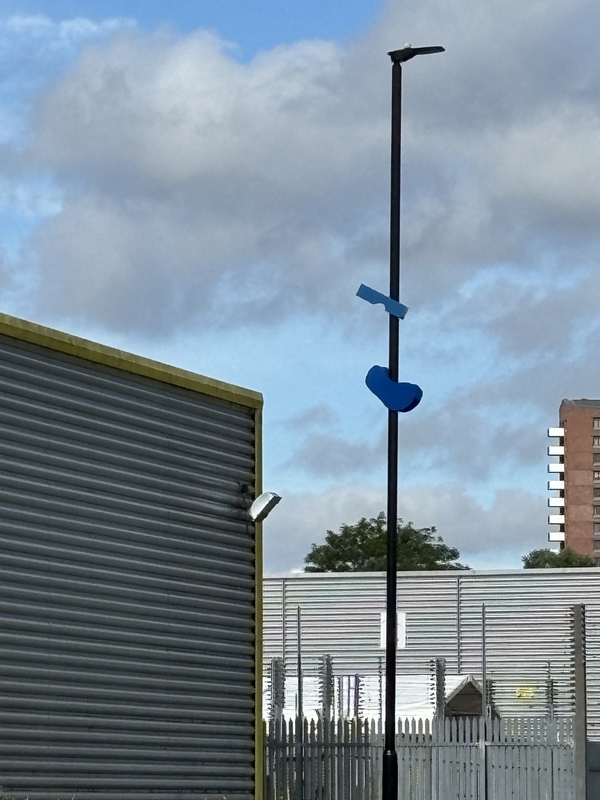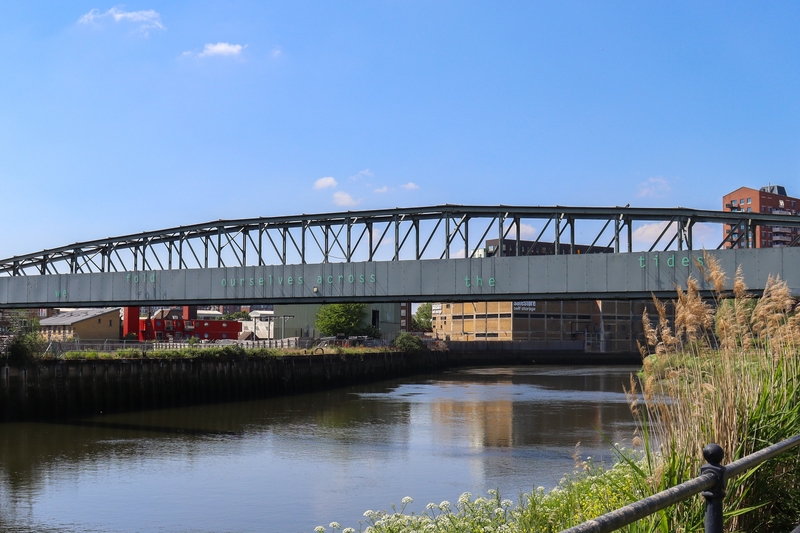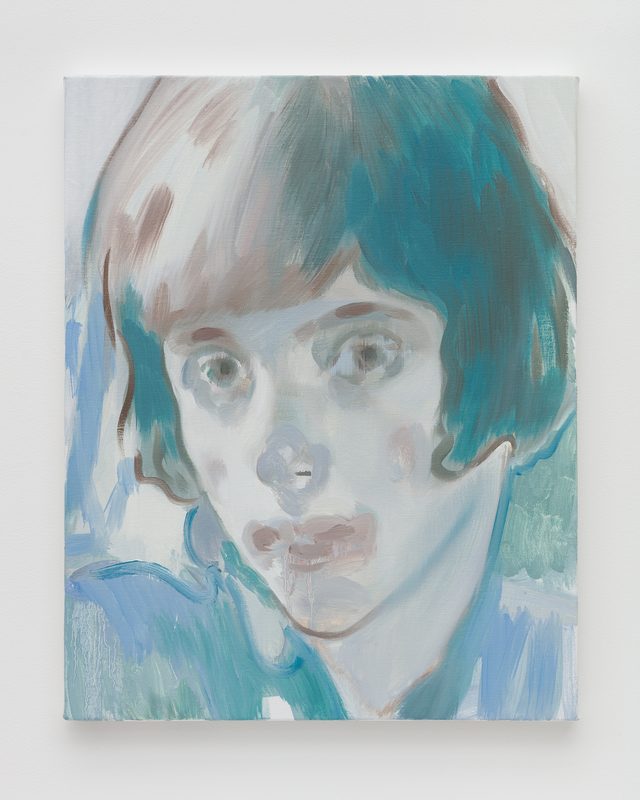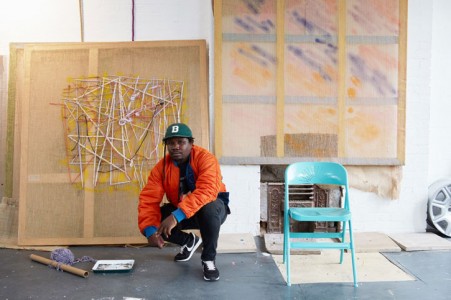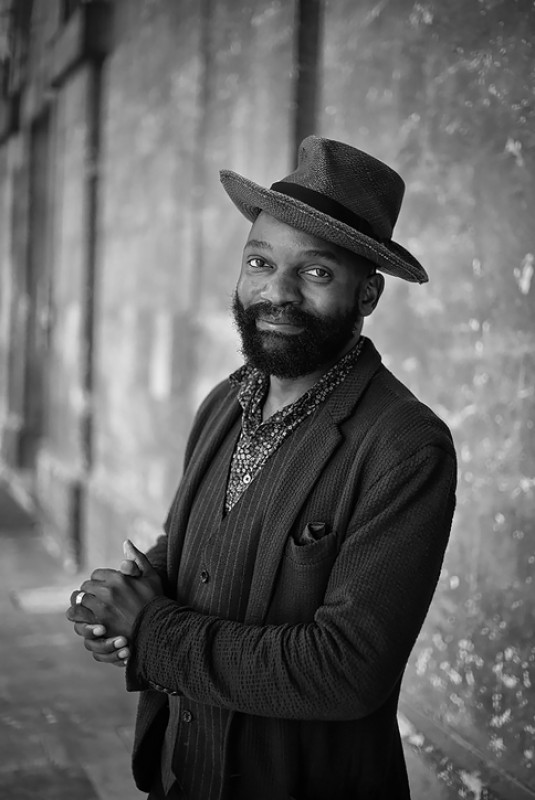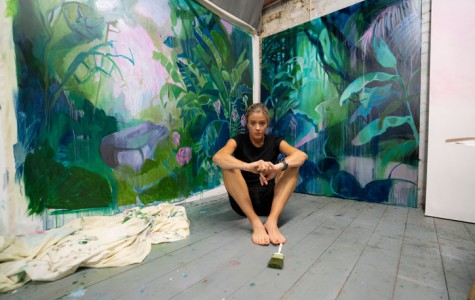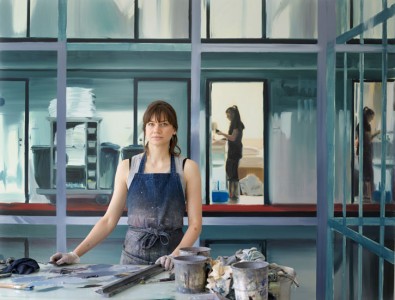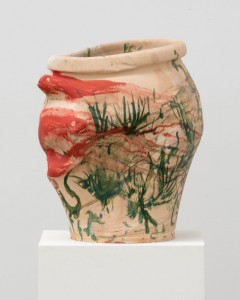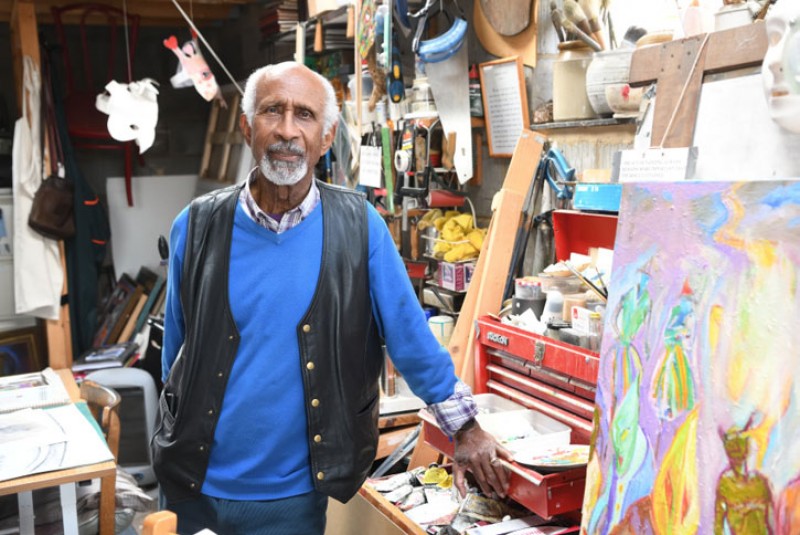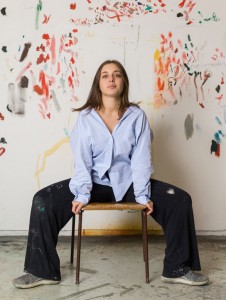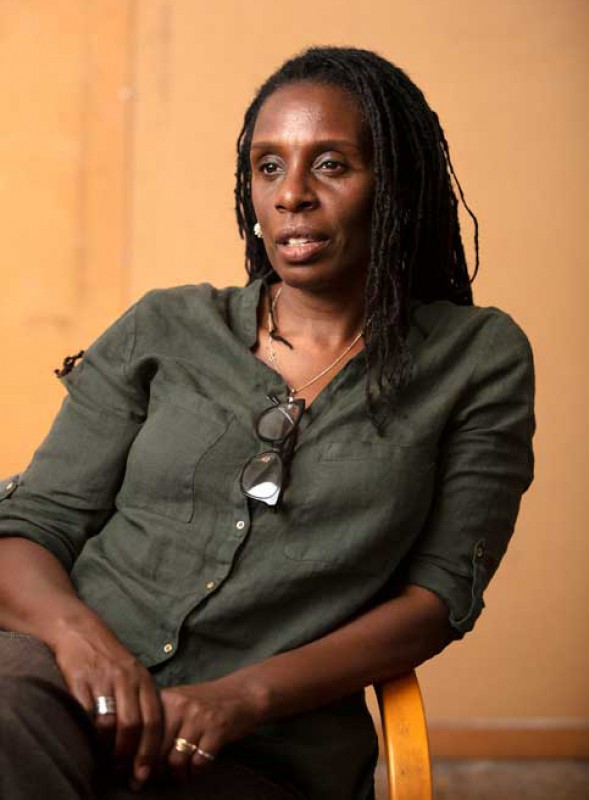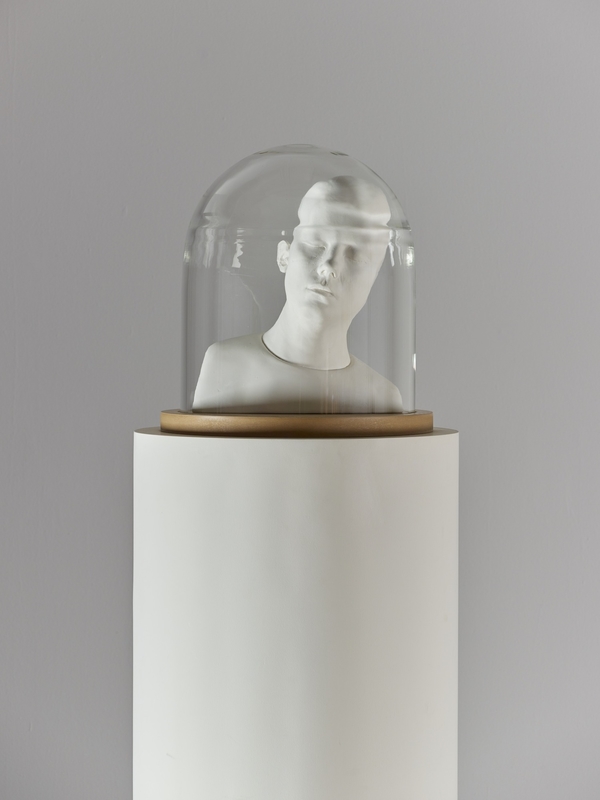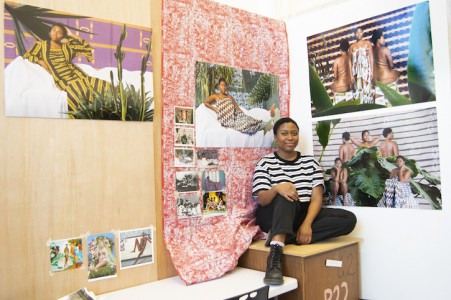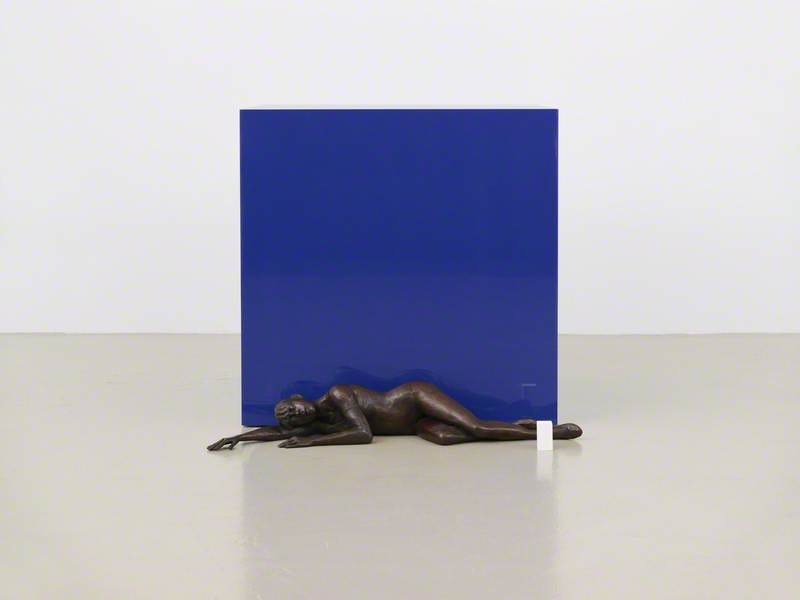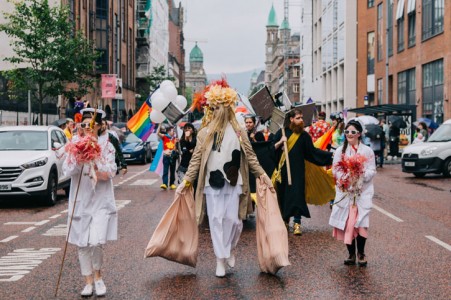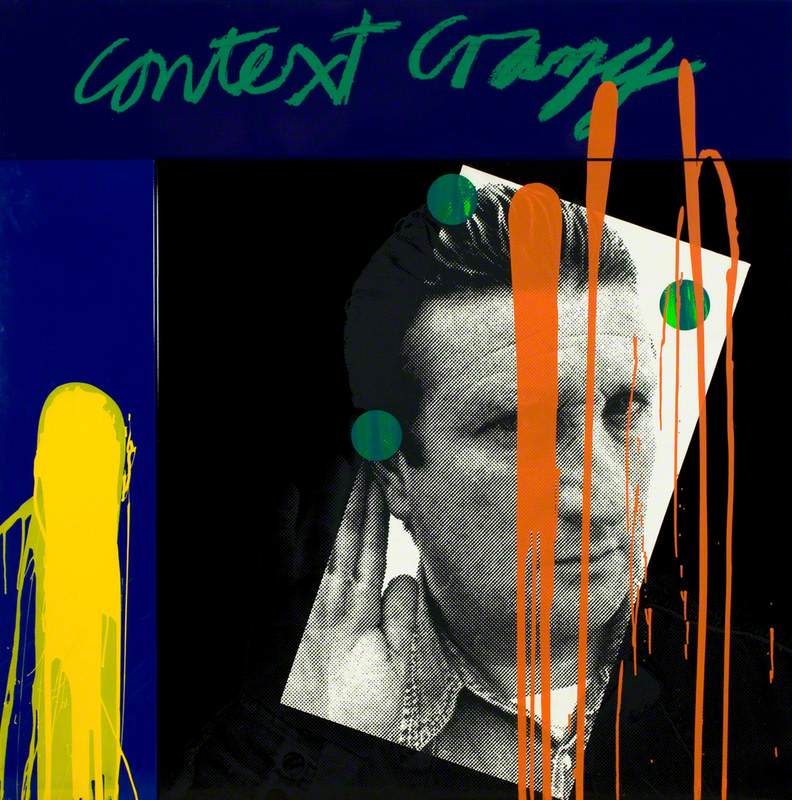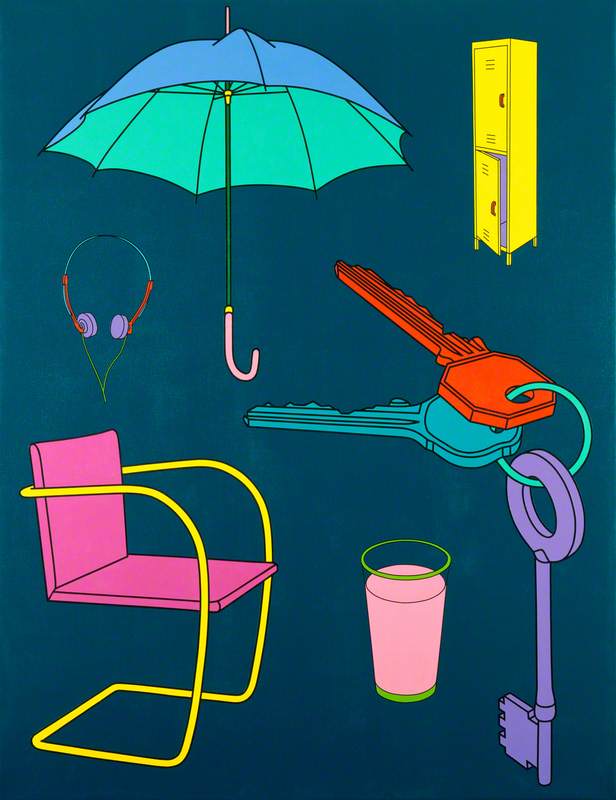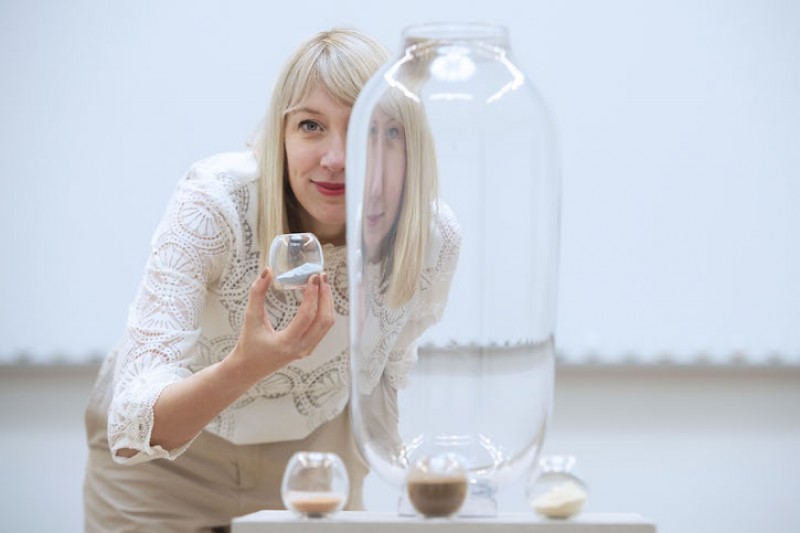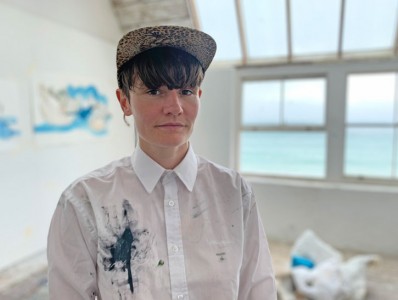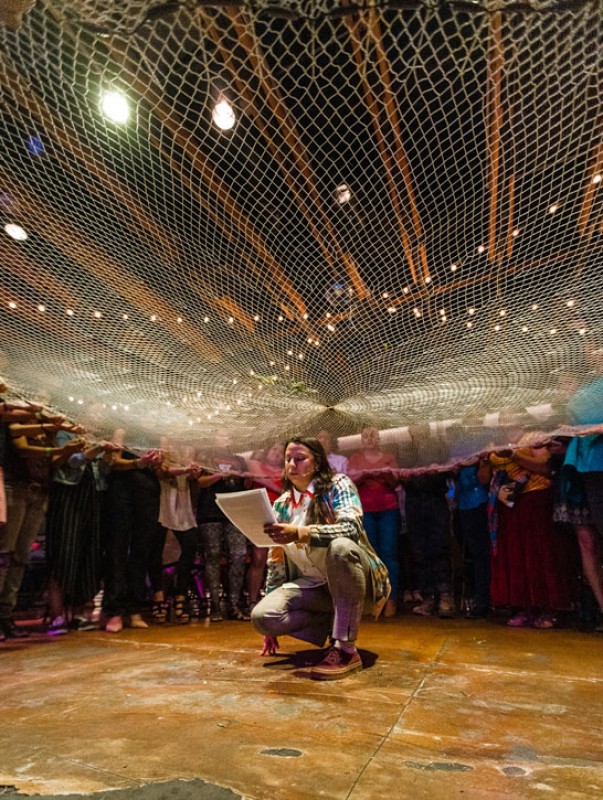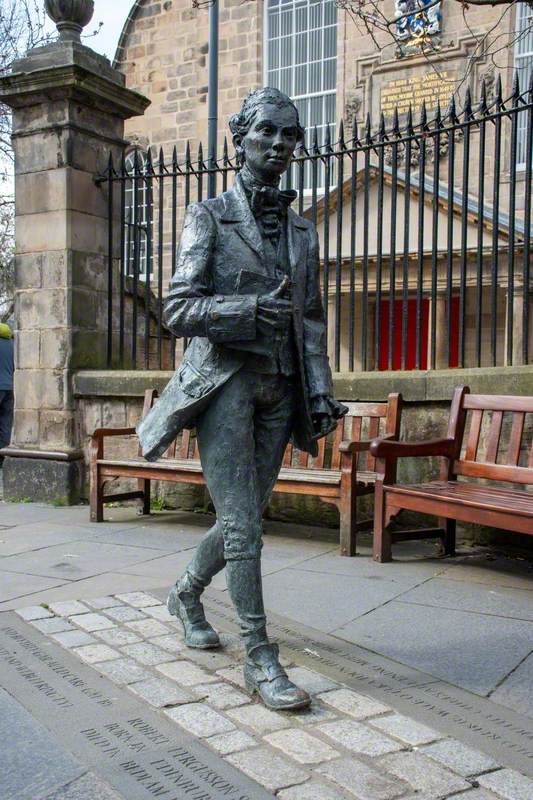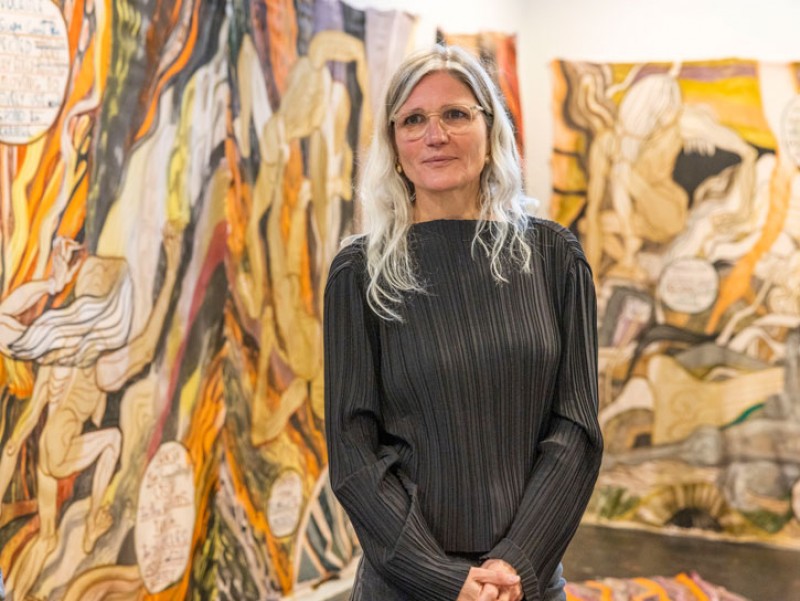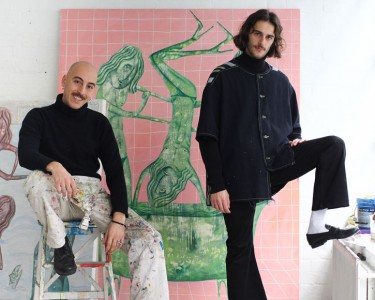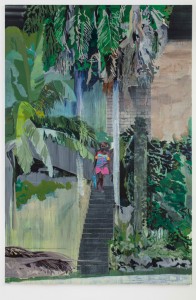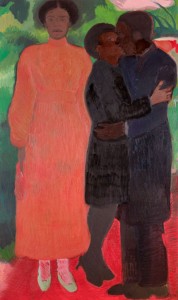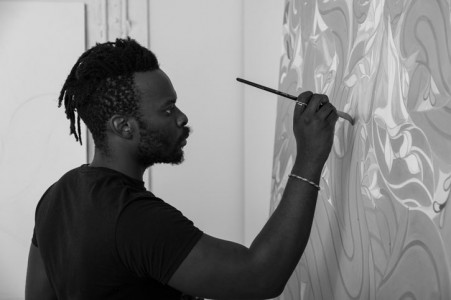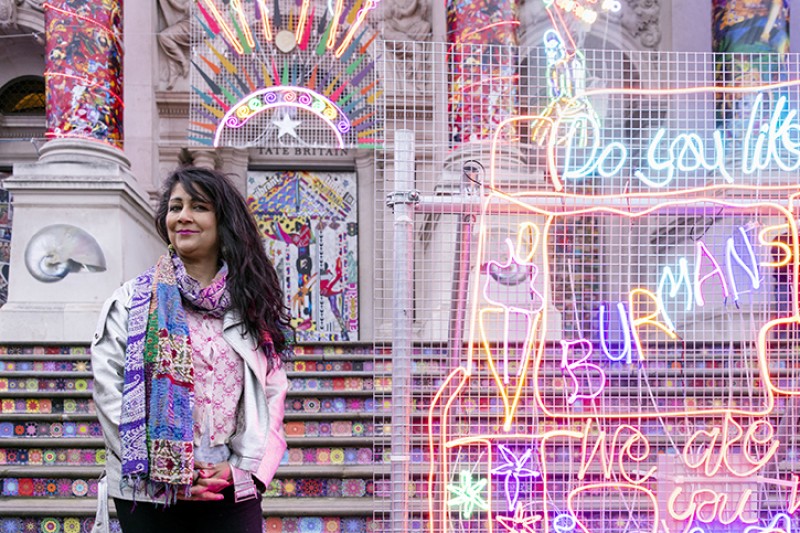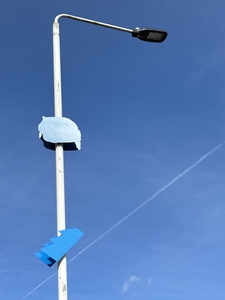For the series 'Seven questions with...' Art UK publishes interviews with emerging and established artists working today.
Katie Schwab is an artist who works with installation, textiles, furniture and moving images to explore histories of craft and education. As her new installation joins The Line, East London's public art trail, Megan Piper speaks with the artist about her work and the process of co-creating projects.
strength study
2021, artwork by Katie Schwab (b.1985). 'small wares' at Vleeshal, Middelburg, Netherlands 
Megan Piper: How did making art begin for you?
Katie Schwab: I grew up in East London, between Hackney and Tower Hamlets, and art making began at home from a young age. My mum studied her Fine Art BA at Middlesex University as a mature student, so from early on I visited her in her studio. She would bring home materials for us to work with – mosaic tiles for a tabletop, wool for felting, fabric scraps for flags, paper for card making. We created artworks that became a part of our home life – a table in the back garden, a mirror in the bathroom – and this shaped an early curiosity about craft and art making.
This Interesting and Wonderful Factory
2019, still from a film by Katie Schwab (b.1985). 'A Working Building' at The Gallery at Plymouth College of Art (now MIRROR), Plymouth 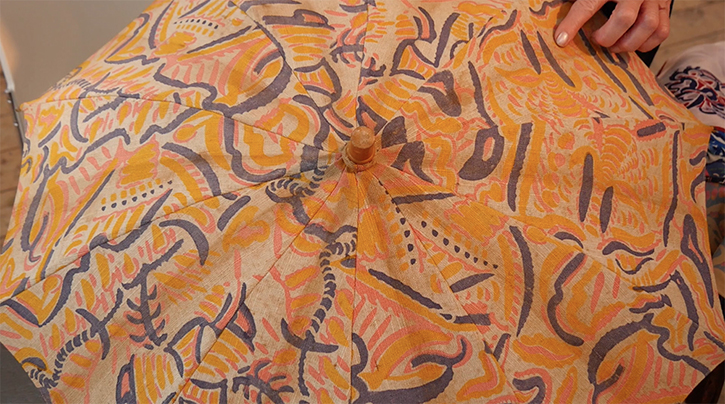
As a teenager in London, I began visiting exhibitions and galleries independently and wanted to see and absorb as much work as I could. I studied art at school with a wonderfully supportive teacher, Stephen Hoult, who had a cupboard full of contemporary art books in the classroom. This all exposed me to many and varied ways of making. I began sewing my own clothes and creating artworks that were stitched, cast, moulded, painted and printed.
These experiences certainly shaped an interest in an interdisciplinary approach to making art and then, at 16, I joined Raw Canvas, the peer youth group at the newly opened Tate Modern. The group would meet regularly in the galleries, planning and facilitating workshops and activities for other young people. This was hugely formative and helped shape an interest in collective working and different ways of engaging with audiences and artworks.
'Making the Bed, Laying the Table'
Florence Dwyer, Katie Schwab and Simon Worthington at Glasgow Sculpture Studios, 2016 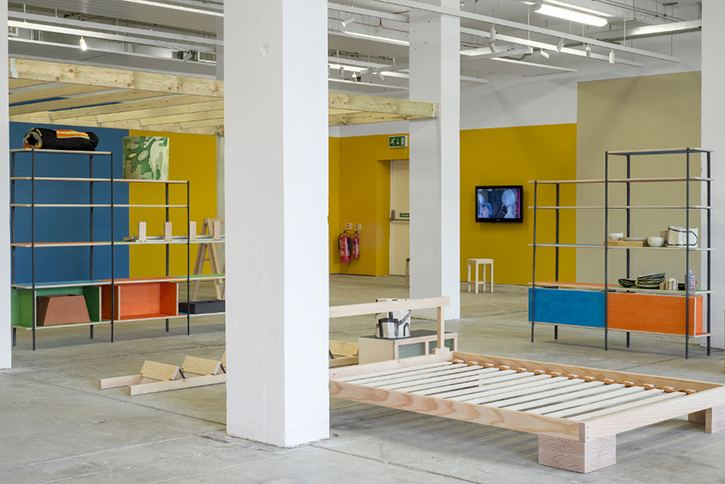
Megan: How has your work changed over time?
Katie: As an undergraduate student, I produced sculptural furniture and printed fabrics which I saw as existing firmly in the gallery space. Over time my work has opened out to embrace functionality and social contexts, inspired by my work as a facilitator with early years, children and young people.
'Knots', Family Day, Baltic, Gateshead
2018, installation by Katie Schwab (b.1985) 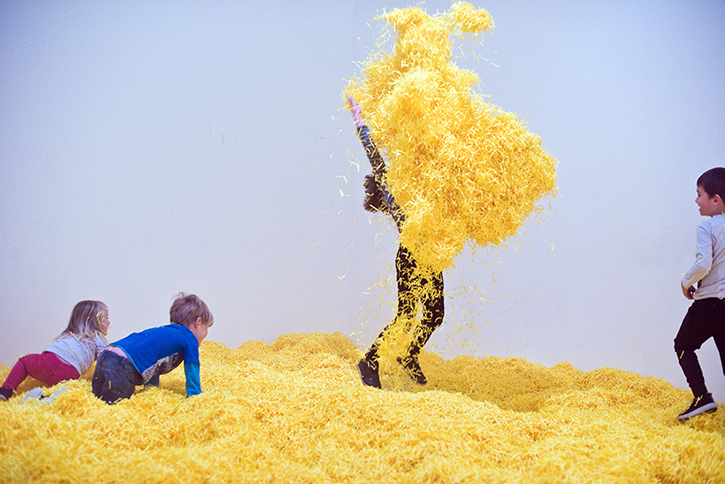
My relationship to the conceptual and formal references in my work has deepened over time, as I situate them in closer relation to my personal family history of textile production. My German Jewish grandparents both came to the UK in 1938 as refugees. My grandmother was forced to abandon her textiles studies in Berlin, and my grandfather left Chemnitz, where his family's hosiery factory had been forcibly purchased by the Nazis. Textiles are therefore part of a family story also shaped by the legacies of migration and war.
'Together in a Room', Collective, Edinburgh, 2019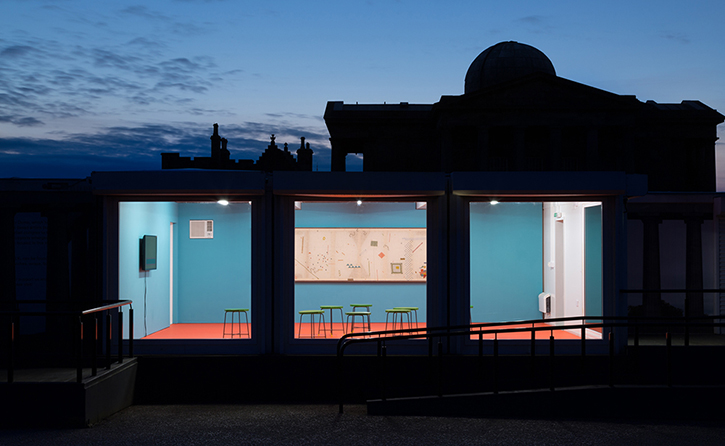
In the 1950s, my grandparents rebuilt their lives in London, starting a family and furnishing a home with furniture and fabrics from the period. These interior decorations have always been an important point of reference for me – they symbolise an optimism, a new start and a rebuilding. My exhibition 'Together in a Room' (Collective, 2016) touched on some of these themes; the video Dedicated to my great teachers included transcripts of my grandmother's account of her textile work, and my artwork Sampler was made with wool inherited after she died.
Sampler
2016, textile by Katie Schwab (b.1985). 'Together in a Room', Collective, Edinburgh 
More recently, I have been interested in materials and making processes connected to wider notions of reconstitution and repair. In my exhibition 'small wares' (Vleeshal, 2021), a large textile was stitched from bias binding, a material traditionally used on hems to stop garments from unravelling.
'small wares', Vleeshal, Middelburg, Netherlands
2021, installation by Katie Schwab (b.1985) 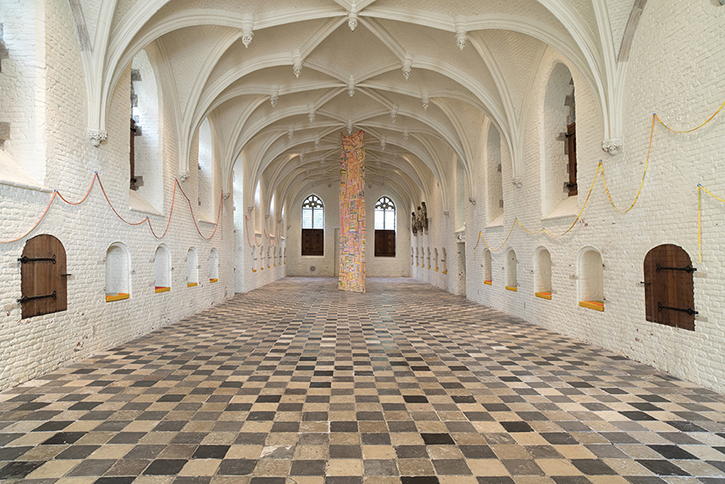
Megan: Who, or what, inspires your work?
Katie: I have always been inspired by textiles, whether through clothing, domestic fabrics or textile artworks. As an undergraduate student, I collected secondhand clothing which inspired my early sculptural and printed artworks, nodding to the amorphous and atomic forms from the 1950s and 1960s. Later, these references became more definitive for me, situated both within a personal history and a longer lineage of women artists and designers working with textiles.
Double Quilt (St Ives/Plymouth/London), 2017–2019
2016–2020, from Katie Schwab, 'A Working Building'. Installation view, British Art Show 9, 2021–2022, Aberdeen Art Gallery. A Hayward Gallery Touring exhibition organised in collaboration with galleries across the cities of Aberdeen, Wolverhampton, Manchester and Plymouth 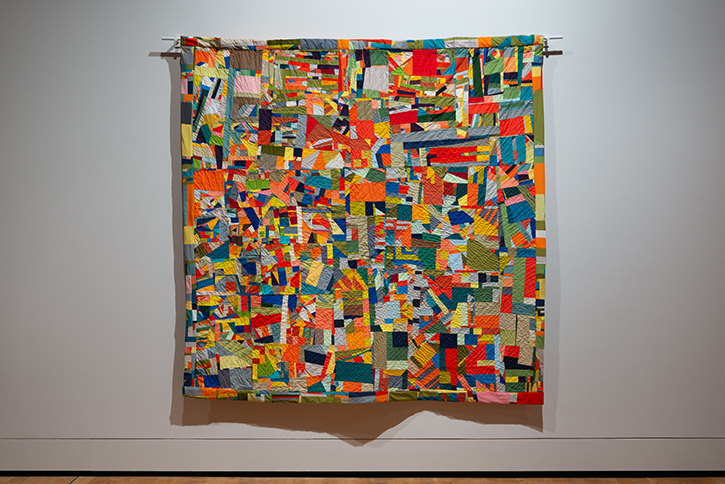
While on my MFA exchange in New York City in 2014, I saw two formative exhibitions: 'Designing Modern Women 1890–1990' (MOMA) and 'Fiber: Sculpture 1960–present' (ICA Boston). In these shows, I encountered the work of Anni Albers, Magdalena Abakanowicz, Lenore Tawney, Beryl Korot and others. The exhibitions gave me insight into the impact of migration and war on twentieth-century textiles and exposed me to artworks that were technically, formally, conceptually and spatially inspiring.
Work Hands 10
2021, artwork by Katie Schwab (b.1985) 
My subsequent research has deepened into looking at the work of textile artists and designers, mostly women, who migrated during the Second World War, for example, Gunta Stölzl, Sophie Taeuber Arp and Jacqueline Groag. This corresponds with an interest in architectural reconstruction, and my exhibition 'A Working Building' (2019) drew on aspects of Plymouth's post-war rebuilding.
'A Working Building' exhibition, 2019
The Gallery at Plymouth College of Art (now MIRROR), Plymouth 
My projects are also inspired by context-specific traditions of making. My recent artworks have looked at the Cryséde block printing factory in St Ives, hosiery manufacturing in Leicestershire and Fair Isle knitwear in Shetland.
Working Position 6
2022, artwork by Katie Schwab (b.1985). 'Hosiery Abstracts', Modern Painters, New Decorators, Loughborough, 2022 
Megan: What is the piece you have created for the commission with The Line art walk?
Katie: The artwork a cloud + a fence is a collection of blue enamel and powder-coated aluminium shapes sited along the route between Star Lane DLR station and Cody Dock. The artwork draws on histories of textile printing and innovative synthetic dye production in the Lower Lea. The collection of abstract shapes and their colours evolved through drawing, collage, block-printing and cyanotype workshops with the co-commissioners and local children and families. Each of the blue shapes nods to a form found along the route, for example, a gate, a rooftop or a leaf.
These shapes are attached to lampposts and fences, providing directional markers for residents and visitors, whilst also drawing attention to the local natural and built environment. The title of the work, a cloud + a fence, is borrowed from the description of a shape documented by one of the co-commissioners along the route.
Megan: How has the experience of creating an external work, as part of a co-commissioned project, informed the development of the piece?
Katie: This was my first time producing an artwork for the public realm and the co-commissioners played a vital role in the evolution of the project. Through a series of workshops, the co-commissioners created the lexicon of shapes for the final artwork and informed the positioning of the shapes along the route. We discussed where and how the shapes would be experienced, taking into account different ways of looking and moving through the landscape.
We also discussed positioning and fixings, ensuring that none of the forms inhibited natural growth on trees or plants. It was interesting to understand individual and collective readings of, and responses to, the landscape and built environment. There was a collective desire to draw attention to both the natural world and the urban architecture along the route, and the points at which these forms coexist.
Megan: What do you hope people will take away from your work?
Katie: I hope that this project gives visitors and residents a sense of place as they travel along Cody Road and South Crescent. The area is pretty busy with traffic, and together with the industrial estates, the route cumulatively can feel quite impersonal. I hope the work introduces a sense of playfulness, while also drawing attention to local ecological work and histories of textile production.
Megan: Can you tell us about something interesting you have learned through making or the process of developing your work recently?
Katie: I had a baby in 2022 and came on my first visit to Cody Dock when he was five months old. This project has evolved as he has grown, and workshops, meetings and site visits have all been navigated around his care. He's been fed on a windy bench by the Lea and has played in Star Lane Pizza Bar while we finished a workshop. I'm continuing to learn about the flexibility of working practices required as an artist parent, and how to adapt to accommodate the needs of my child and the needs of the project.
Megan Piper, Co-Founder and Director of The Line
Visit The Line's website for more about East London's public art trail, or download The Line's guide on the Bloomberg Connects app

